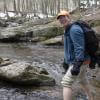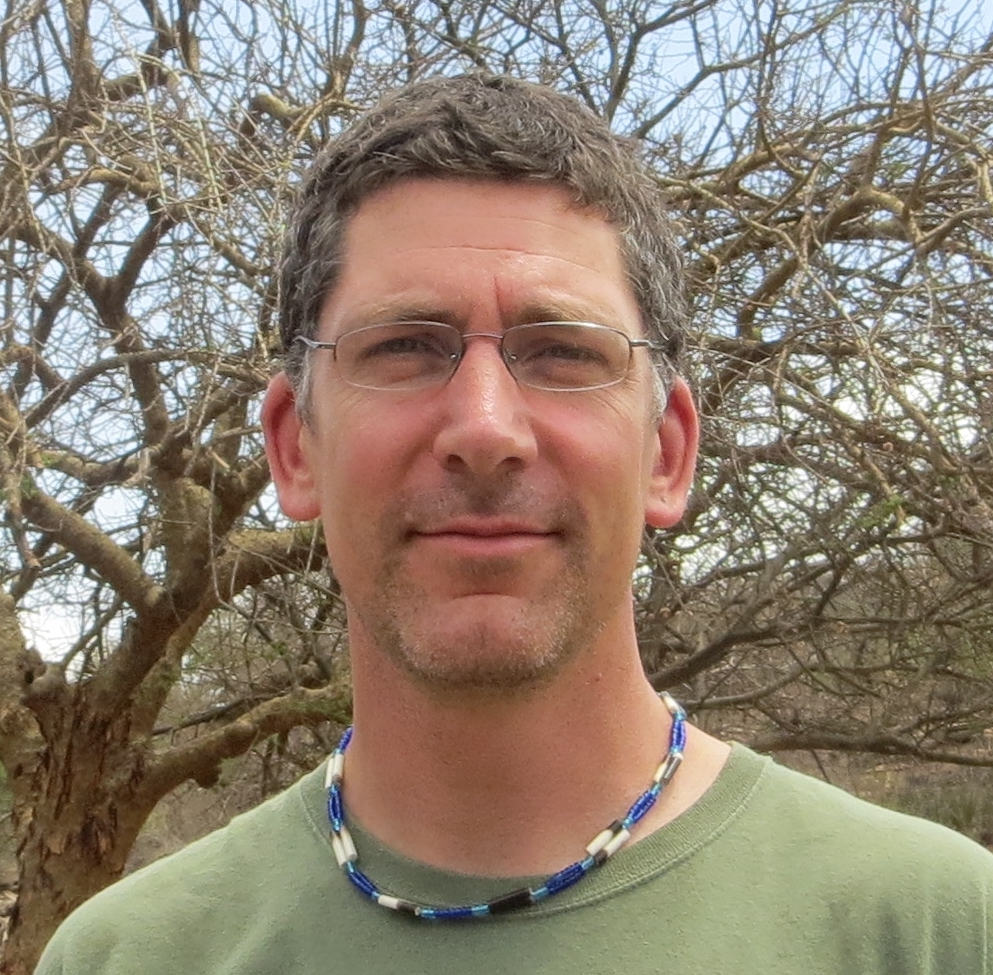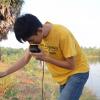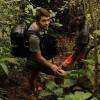Camera traps have been a key part of the conservation toolkit for decades. Remotely triggered video or still cameras allow researchers and managers to monitor cryptic species, survey populations, and support enforcement responses by documenting illegal activities. Increasingly, machine learning is being implemented to automate the processing of data generated by camera traps.
A recent study published showed that, despite being well-established and widely used tools in conservation, progress in the development of camera traps has plateaued since the emergence of the modern model in the mid-2000s, leaving users struggling with many of the same issues they faced a decade ago. That manufacturer ratings have not improved over time, despite technological advancements, demonstrates the need for a new generation of innovative conservation camera traps. Join this group and explore existing efforts, established needs, and what next-generation camera traps might look like - including the integration of AI for data processing through initiatives like Wildlife Insights and Wild Me.
Group Highlights:
Our past Tech Tutors seasons featured multiple episodes for experienced and new camera trappers. How Do I Repair My Camera Traps? featured WILDLABS members Laure Joanny, Alistair Stewart, and Rob Appleby and featured many troubleshooting and DIY resources for common issues.
For camera trap users looking to incorporate machine learning into the data analysis process, Sara Beery's How do I get started using machine learning for my camera traps? is an incredible resource discussing the user-friendly tool MegaDetector.
And for those who are new to camera trapping, Marcella Kelly's How do I choose the right camera trap(s) based on interests, goals, and species? will help you make important decisions based on factors like species, environment, power, durability, and more.
Finally, for an in-depth conversation on camera trap hardware and software, check out the Camera Traps Virtual Meetup featuring Sara Beery, Roland Kays, and Sam Seccombe.
And while you're here, be sure to stop by the camera trap community's collaborative troubleshooting data bank, where we're compiling common problems with the goal of creating a consistent place to exchange tips and tricks!
Header photo: Stephanie O'Donnell
- 0 Resources
- 0 Discussions
- 3 Groups
- @ImaniWilson
- | She / Her
Zoology with a placement year graduate from Bangor University. Interested in large African mammal movement and behaviour in response to climate change, particularly African elephants
- 0 Resources
- 0 Discussions
- 13 Groups
- @Ferrugem
- | They/Them
Latin American environmental scientist.
- 0 Resources
- 0 Discussions
- 2 Groups
Robotics and IoT Engineer living in Costa Rica since 2000
- 0 Resources
- 1 Discussions
- 4 Groups
Researcher interested in waterbird ecology and conservation
- 0 Resources
- 1 Discussions
- 6 Groups
Royal Society for the Protection of Birds (RSPB)



- 1 Resources
- 18 Discussions
- 4 Groups
Camera Trap Technologist at Large


- 1 Resources
- 36 Discussions
- 1 Groups
- @HollyCormack
- | she/her
Biodiversity Knowledge Management Intern at the Biodiversity Consultancy Ltd



- 6 Resources
- 5 Discussions
- 6 Groups
- @ryanhuang
- | He/Him/His
Conservation scientist based in Pretoria, South Africa
- 0 Resources
- 0 Discussions
- 6 Groups
- @jsstamn
- | She/her
PhD student at the University of Mississippi; research interests include predator/prey dynamics, particularly the landscape of fear in relation to species conservation. Rookie at using arduino
- 0 Resources
- 4 Discussions
- 5 Groups
An Environmental sciences and Management graduate from SUA, passionate and eager to drive change to the Environment, making World a better place for present and future generations.





- 4 Resources
- 35 Discussions
- 14 Groups
- 0 Resources
- 0 Discussions
- 1 Groups
Happy World Wildlife Day! To celebrate, this week we've asked our community to share photos showing how they are using tech in the field or the lab, using the #Tech4Wildlife hashtag.
3 March 2019
Arribada recently returned from field sites in Assam, India where they tested the image quality and detection abilities of low-cost thermal sensors for detecting elephants in conflict areas. Arribada is working on these...
1 March 2019
In this case study, Science Reporter Jamie Morton tells the story of how Kiwi scientists are teaming up with a local underwater robotics company to gain world-first insights into the lives of whales in Antarctica.
4 February 2019
A comprehensive aerial survey of whales and dolphins off the coast of South Africa supported by a range of organisations including Fauna & Flora International (FFI) has recorded an astounding 1,106 southern right...
22 November 2018
A team of Brazilian biologists supported by the Conservation Leadership Programme (CLP) is unlocking the secrets of one of the world’s most fragile and threatened biodiversity hotspots thanks to the success of a...
22 November 2018
Although invaluable for conservation and ecological research, camera traps frequently take pictures of people as well as wildlife. This has important implications for privacy and human rights and may ultimately...
22 November 2018
Ted Schmitt joined us for a lunchtime lecture in which he shared his experiences working across Africa the past five years with protected area managers, anti-trafficking organisations, and scientists to effectively...
22 November 2018
In this case study, WILDLABS member Sol Milne takes us through his Ph.D. work investigating how changing land-use is affecting orangutan distribution in Sabah, Malaysian Borneo. With the help of five local research...
22 October 2018
Machine learning is widely recognized as the solution to camera trap data processing, but a user-friendly and broadly-accessible system for putting this tech to use has not yet been developed. In this case study,...
1 October 2018
Motion-sensing wildlife-tracking cameras in South Sudan have captured 425,000 photos, documenting species not previously known to be found in this richly forested area. The team is now asking for your help to identify ...
22 August 2018
In this case study, Sam Seccombe documents his efforts to track down an off-the-shelf remote camera setup with the capability to stream quality, reliable video from the field. As he explains, it was a slighlty more...
25 July 2018
This latest chapter in the Conservation Technology Series from WWF-UK looks at the opportunities, challenges and state-of-the-art of satellite remote sensing for conservation applications. This issue reviews available...
23 April 2018
June 2025
July 2025
February 2023
event
November 2022
October 2022
event
September 2022
August 2022
July 2021
58 Products
Recently updated products
4 Products
Recently updated products
| Description | Activity | Replies | Groups | Updated |
|---|---|---|---|---|
| Actually, you can source the product from anywhere, but I’m not very confident in the quality of products from China. That doesn’t mean products from China are bad—it might just... |
|
Camera Traps | 5 months ago | |
| great, this security cameras might be interesting for monitoring crop development and maybe other bigger pests like boars or some other herbivorous animals that could eventually... |
|
AI for Conservation, Camera Traps | 5 months ago | |
| Seems like we should include some rotations in our image augmentations as the real world can be seen a bit tilted - as this cropped corner view from our fisheye at the zoo shows. |
+13
|
AI for Conservation, Camera Traps, Data management and processing tools | 5 months 1 week ago | |
| Thanks! The Teensys are nice for processing power if choosing an external Lora board I’d say that’s a good choice. I started with teensies, there was a well supported code base... |
|
Camera Traps, Sensors | 5 months 2 weeks ago | |
| Hi Raza,As @ollie_wearn suggests, if think traptagger will be the easiest for you: You just have to follow the tutorial there:The person in charge of Traptagger is also very... |
+3
|
Camera Traps | 5 months 2 weeks ago | |
| Hello Wildlabs community! My name is Shawn Johnson and I am a research assistant for Dr. Karen Mager and Dr. Bernie Boscoe here at Southern... |
|
Camera Traps | 6 months ago | |
| Hi Zhongqi! We are finalizing our modelling work over the next couple of weeks and can make our work availabile for your team. Our objective is to create small (<500k... |
|
AI for Conservation, Camera Traps, Software Development | 6 months ago | |
| There's quite a few diy or prototype solutions described online and in literature - but it seems none of these have made it to market yet as generally available fully usable... |
|
AI for Conservation, Camera Traps, Human-Wildlife Conflict, Sensors | 6 months ago | |
| I think the big thing is power consumption. Commercial camera traps have a large power (current) dynamic range. That means they can often swing from ~0.1 mA to ~1000 mA of current... |
|
Camera Traps | 6 months ago | |
| As others have said, pretty much all image models at least start with general-subject datasets ("car," "bird," "person", etc.) and have to be refined to work with more precision... |
+20
|
AI for Conservation, Camera Traps | 6 months 1 week ago | |
| This is a thread for anyone who has questions about AI for Conservation Office Hours 2025.We're once again teaming up with Dan Morris from... |
|
Acoustics, AI for Conservation, Camera Traps, Community Base, Geospatial | 6 months 1 week ago | |
| Hi Eugene!Interesting project!I already signed up to test it!Cheers,Lars |
|
AI for Conservation, Camera Traps | 6 months 2 weeks ago |








































